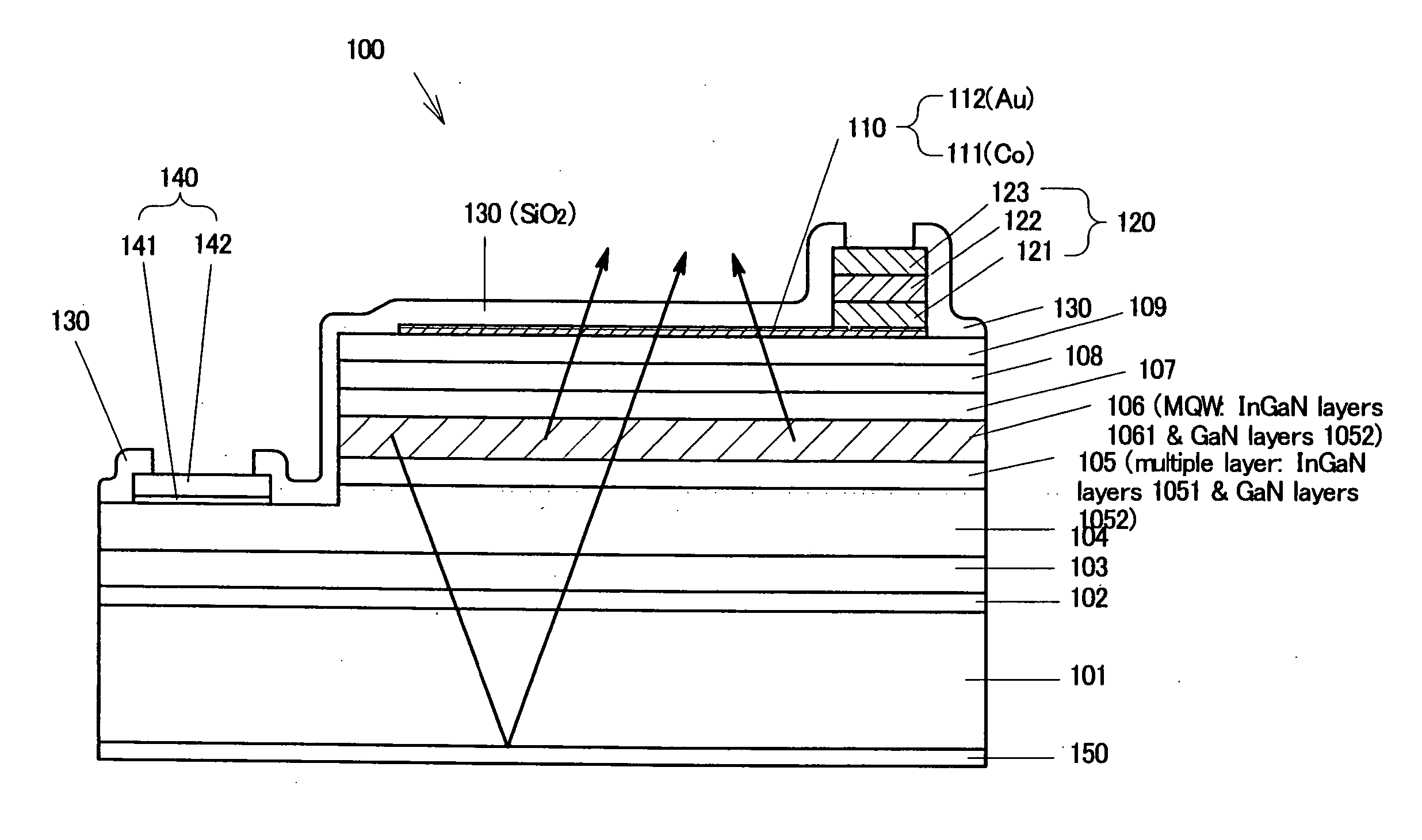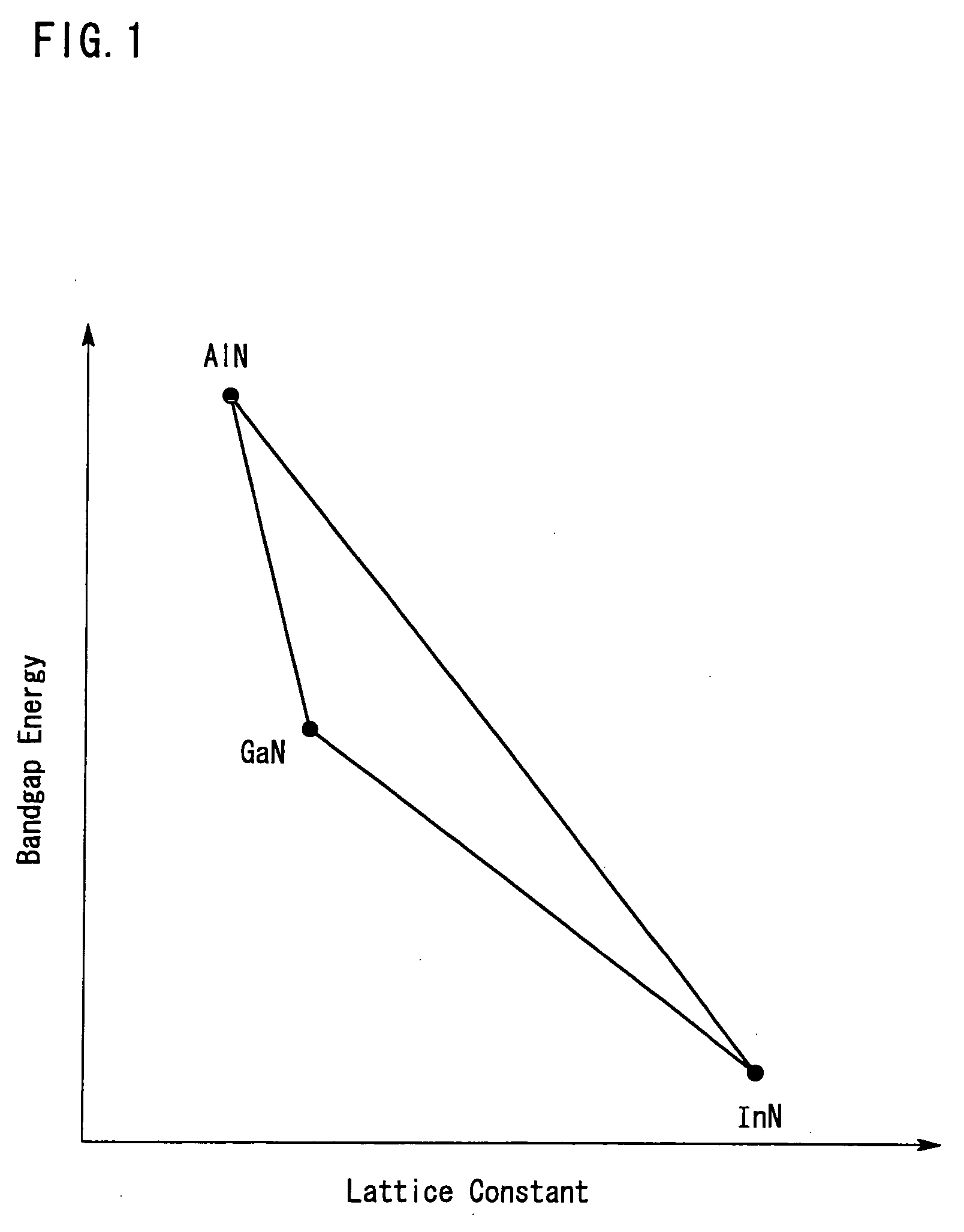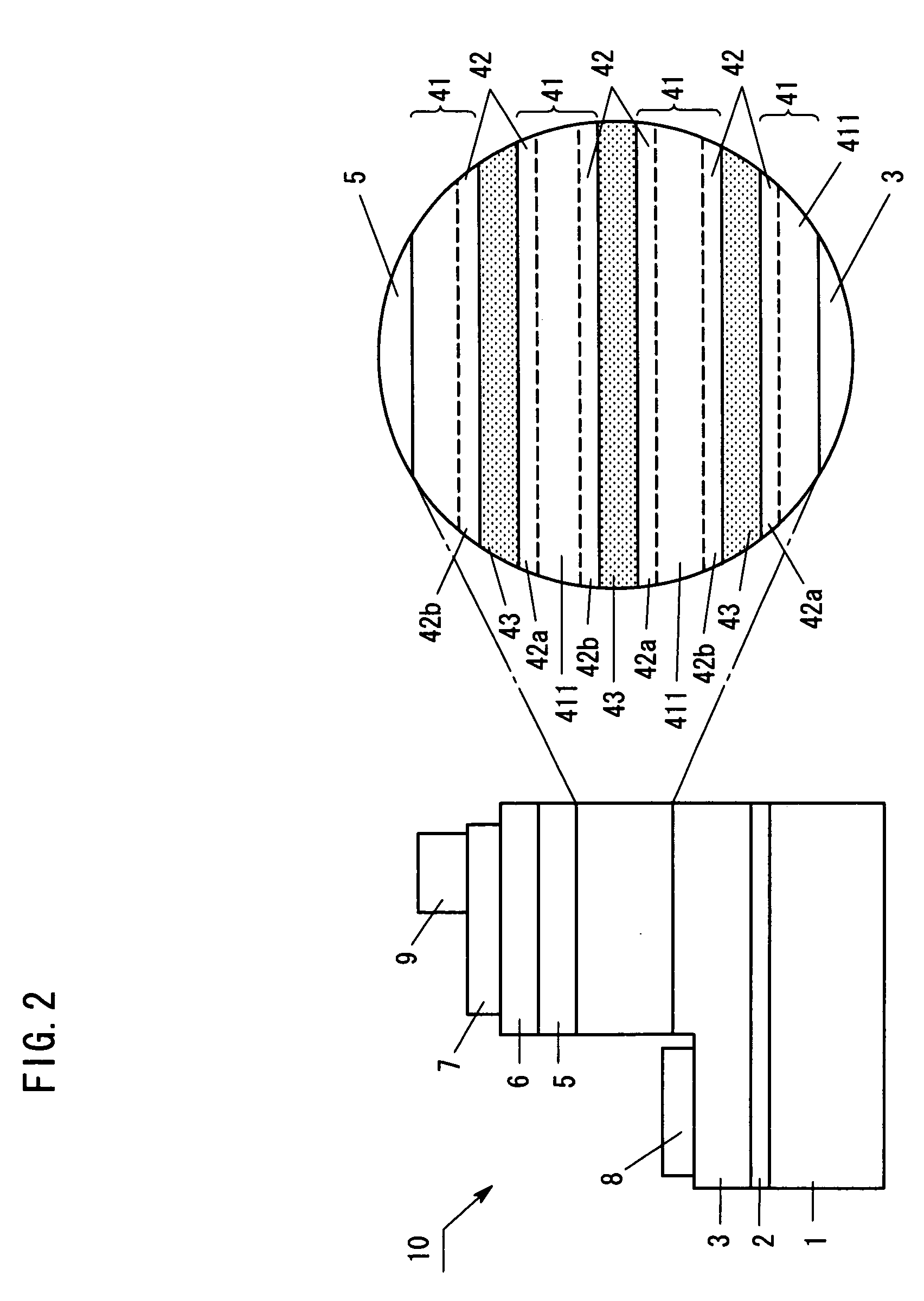Group III nitride-based compound semiconductor light-emitting device and method for producing the same
a compound semiconductor and light-emitting device technology, applied in the field of group iii nitride-based compound semiconductor light-emitting devices, can solve the problems of inability to realize four-component alingans having high crystallinity, and inability to achieve excellent emission intensity and output intensity, etc., to prevent the generation of edge dislocations, enhance crystallinity, and reduce the effect of misfit dislocation
- Summary
- Abstract
- Description
- Claims
- Application Information
AI Technical Summary
Benefits of technology
Problems solved by technology
Method used
Image
Examples
example 1
[0044]FIG. 2 is a schematic cross-sectional view of a light-emitting device 10 fabricated from Group III nitride-based compound semiconductors. In the device, light is extracted through the top surface on the semiconductor layer formed on a sapphire substrate 1. On the substrate 1, an AlN buffer layer 2 (thickness: about 25 nm) and a high-carrier-concentration layer 3 (thickness: about 4.0 μm) formed of silicon (Si)-doped GaN are sequentially formed. On the high-carrier-concentration layer 3, there is formed a multiple quantum well layer 4 in which barrier layers 41 (thickness: about 8 nm) and In0.1Ga0.9N well layers 43 (thickness: about 3 nm) are alternatingly stacked. Each barrier layer 41 includes a main region 411 formed of Al0.1Ga0.9N and an interface region 42 (thickness: about 1.5 nm) which is in contact with the well layer 43. In an interface region 42a underneath the well layer 43, the Al composition of Al0.1Ga0.9N in the main region 411 continuously decreases toward the up...
example 2
[0061] In Example 1, the composition of the interface region 42a in contact with the lower surface of the well layer 43 is varied from AlGaN, via GaN, to InGaN. Alternatively, the composition of the interface region 42a may be varied from AlGaN to GaN, and this compositional variation is also effective. In the case, the following procedure was employed. After formation of the high-carrier-concentration layer 3, the temperature of the substrate 1 was adjusted to 900° C., and N2, NH3, TMA, and TMG were supplied to the chamber, to thereby form an Al0.1Ga0.9N main region 411 (thickness: about 5 nm). The TMA feed rate was continuously decreased to 0 with lowering the temperature of the substrate 1, to thereby form a region 42a (thickness: about 1.5 nm) which is in contact with the lower surface of the well layer 43. During the course of temperature lowering, the TMA feed rate was controlled to 0 when the temperature of the substrate 1 reached 600° C. In Example 2, a first barrier layer 4...
example 3
[0079]FIG. 4 is a schematic cross-sectional view of a Group III nitride-based compound semiconductor light-emitting device 100 of Example 3 of the present invention. As shown in FIG. 4, in the semiconductor light-emitting device 100, an aluminum nitride (AlN) buffer layer 102 (thickness: about 10 nm), a non-doped GaN layer 103 (thickness: about 2 μm), and an n-type contact layer 104 (high-carrier-concentration n+ layer) (thickness: about 3 μm) formed of silicon (Si)-doped GaN with a dopant amount of 5×1018 / cm3 were sequentially formed on a sapphire substrate 101 (thickness: about 300 μm).
[0080] On the n-type contact layer 104, a multilayer 105 (thickness 40 nm) and a light-emitting layer 106 of a multiple quantum well structure were sequentially formed, the multilayer 105 comprising stacked 20 pairs of a non-doped In0.1Ga0.9N layer 1051 (thickness: 1 nm) and a non-doped GaN layer 1052 (thickness: 1 nm), and the light-emitting layer 106 comprising stacked 6 pairs of a non-doped In0....
PUM
 Login to View More
Login to View More Abstract
Description
Claims
Application Information
 Login to View More
Login to View More - R&D
- Intellectual Property
- Life Sciences
- Materials
- Tech Scout
- Unparalleled Data Quality
- Higher Quality Content
- 60% Fewer Hallucinations
Browse by: Latest US Patents, China's latest patents, Technical Efficacy Thesaurus, Application Domain, Technology Topic, Popular Technical Reports.
© 2025 PatSnap. All rights reserved.Legal|Privacy policy|Modern Slavery Act Transparency Statement|Sitemap|About US| Contact US: help@patsnap.com



